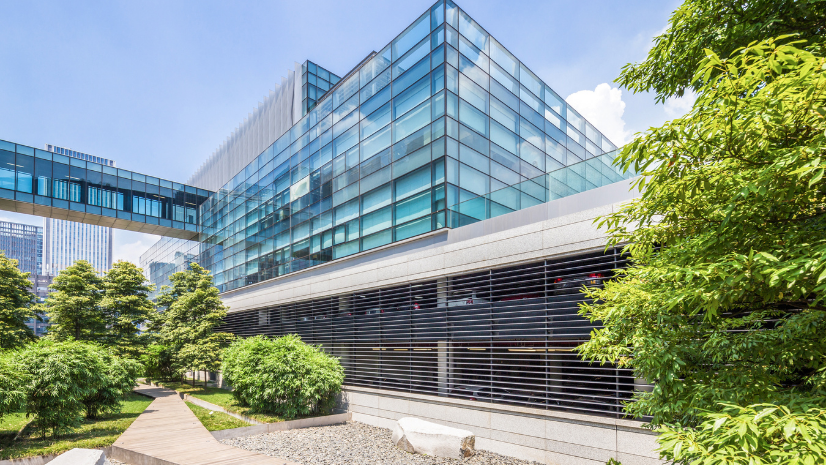I had a chance to review the latest research from Retail Systems Research (RSR) looking at how consumer-facing companies, specifically retailers, are thinking about location-based technology and location centric data. This is the third year that RSR has conducted research into how companies are using location intelligence and how they perceive the value of this technology. This was an especially poignant time to conduct a study like this, coming on the heels of profound changes in consumer behaviors as a direct result of the COVID-19 pandemic.
Constant Change Requires Real-Time Intelligence
One of the key findings of the report is that the vast majority of business leaders in the study feel that the pace and scope of change experienced during the pandemic are not an anomaly. Accelerated change will continue, and business needs to adjust accordingly. Eighty percent of respondents believe that their business models will experience disruption because of changing consumer and economic conditions in the next three years. Ninety percent of these leaders see the need to “find new ways to drive sustainable growth” as critical for their long-term success.
Clearly, businesses believe that the impact of the pandemic on their operations is not a one-time event they need to get past so that they can go back to business as usual. The vast majority of business leaders in this study have that change is constant and will continue. Location intelligence was deemed an important tool in tracking, measuring, and informing tactics to mitigate the disruption caused by change to their business.

Location Intelligence and Market Data Became More Important for Business during the Pandemic
For the second year in a row, RSR has found a gap between companies that are successful and other organizations in their adoption of geographic information system (GIS) and location-based technology to inform decisions and monitor their business. This gap grew even wider in the latest study, mostly due to the impact of the pandemic. The study found that leaders who rated “combining geographic and demographic data for better business decisions” as being very valuable increased 11 percent, from 71 percent to 82 percent, in the last year. That is a very significant change.
It would indicate that in retail, companies have realized the importance of local insights to guide strategic decisions. This was certainly the case during the early days of the pandemic. Now I believe the genie is out of the bottle regarding this capability. Companies have recognized the importance of precise local data and are using it in new areas to inform decisions and support growth and resiliency.
I thought it was interesting to see that there was a 25 percent increase in the number of companies that feel that weather analysis is very valuable to their business. I would conjecture that this is due to increased awareness of the impact of climate change on business operations. We have seen the number of extreme weather events accelerate in the last few years. Wildfires in the United States as well as unprecedented rains and flooding in Europe and Asia have all impacted business significantly. Leaders looking for tools to monitor and assess the impact of extreme weather are finding GIS to be a valuable tool.
The Fast Moving Consumer Goods Segment Is Moving the Needle
One of the most significant changes I’ve noted in this year’s study versus the previous year’s is how companies in the Fast Moving Consumer Goods (FMCG) segment have changed their thinking on how important location intelligence is to their business. This is not surprising, since this segment was probably the most impacted by the pandemic. These companies’ supply chains were and continue to be disrupted by volatile demand signals and consumer behaviors, and preferences changed virtually overnight. On top of volatility, for many categories of products, access to raw materials was disrupted, production was impacted, and transportation networks were disrupted. When you add issues with staff and the need to find frontline workers to deliver goods and services, you see that FMCG was hit with a perfect storm of challenges.
At the same time that these businesses found themselves reacting to these disruptions, their customers changed the way they wanted to engage with them. Retail especially had to learn to meet customers’ needs with new business models and on new channels.
We are seeing this segment, in particular, investing in new store designs that extend companies’ ability to deliver omnichannel capabilities like curbside and home delivery. Earlier this year, Target announced it is remodeling its stores—many of which were just coming off very recent remodels—to expand stock rooms and temperature-controlled staging areas, all to support curbside service. This makes sense. Target’s record results this year have been tied to expanded services and fulfillment options, which has enabled the company to serve its customers in the way they want to be served: in the store, at the curb, or with delivery made directly to their front door.
All of these capabilities are empowered by location-based technology. For example, knowing when customers are en route to a store to pick up an order, and providing an ETA to the store team, enables retailers like Target to provide a seamless experience for their customers. This capability has become a core service for winning retailers during the pandemic, and all signs indicate that it will continue to be so in the future.
Team Members Matter—a Lot
I was glad to see that, for the second straight year, employee safety is considered to be one of the top business priorities for companies. We see this in our sustainability and security operations practices. Location intelligence is critical here because it allows leaders and frontline managers to quickly assess compliance and safety issues across their enterprise, using maps and dashboards to inform decisions and implement policies and practices that ensure team and customer safety. It’s important to note that the disjointed nature of pandemic restrictions across jurisdictions reinforced the need for an authoritative source of location data, as retailers were required to understand the impact of governmental regulations on their individual locations.
Supply Chains Continue to Be Disrupted
No one should be surprised to learn that business leaders are deeply concerned about the ongoing disruption to their supply chains. The location of their assets, the reliability of sourcing and raw materials, and volatile demand are creating instability across industries and product types. The study found that there is a strong need for leaders to know where their assets are, where disruptions are happening now, and where they will happen in the near future. Here, the gap between successful businesses and the rest was very apparent. The best-in-class companies are making investments in technology to understand these supply chain issues in as near to real time as the tools will allow, with real-time dashboards and location -specific data. Digital twins; real-time, location-specific data; and the tools to analyze and share findings are a critical component of any strategy to mitigate supply chain disruption.
Business Resilience Planning Is Critical
Ninety-seven percent of leaders in this study rated business continuity planning as important. The study cites resilience, effectiveness in operations, and sustainable growth as being the “trinity” for organizational excellence today. At the center of this trinity is customer analytics—as the report states, “Without a strong location analytics element, customer relevancy is impossible.”
We know that customer analytics and market intelligence are a key growth driver. This study indicates that these capabilities are important to operations and resilience as well. By having the data to understand how customers are interacting with local operations and how they change behaviors in response to changes in their local environment, businesses are able to measure changes and adjust business plans in response.
In Summary
The recommendations from RSR are consistent with what we have been seeing and hearing from our customers and in the market:
- Change is constant. The pandemic accelerated many changes that were already in play in the marketplace—for example, the adoption of curbside pickup. The message of business is that change isn’t a singular occurrence that you react to temporarily—it’s a constant now, and the speed of change continues to accelerate. Having tools that can help you monitor, analyze, and be informed about the scope and pace of change is key.
- Location is a key element of customer engagement. Knowing where your customers are and how they engage with your brand is critical to understanding them and creating relevant and authentic conversations with them.
Supply chain resiliency requires real-time analytics. Supply chains before the pandemic focused on hyper-efficiency and just-in-time methodologies. This came at the expense of agility and flexibility. As a result, the supply chains for many products proved unable to react quickly to volatile demand or disruptions to availability of raw materials. Location-based technology is critical to asset and supply chain management.

![Card image for article: [Video] Unlocking Customer Insights with the ArcGIS and the CRM](https://www.esri.com/en-us/industries/blog/wp-content/uploads/2021/05/blog826CRM.png)


